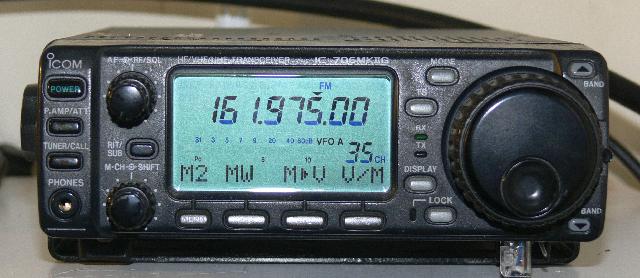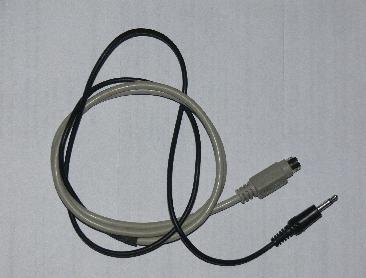

Imagine this scenario- You are in the Straits of Florida bound for the Bahamas. There are ships all around and your hand bearing compass tells you that one is of particular concern. Wouldn't it be nice if you knew its name so you could call on VHF? How about its name, hailing port, call letters, speed, heading, size, destination, time of CPA, distance at CPA, their lunch menu …..? Ok, just kidding about the lunch but the rest and more are available to you if you had AIS.
All large ships and many other craft are equipped to transmit and receive 26 millisecond data bursts on two frequencies in the marine VHF band. The system is called Automatic Identification System -AIS- and is expensive for a full capacity commercial system. Single frequency - Receive only systems are cheaper and make more sense for our 'small ships'. It's cheaper still if you already have the receiver.
Jim WB4GQK (SK) introduced me to AIS a few years back. I ran a few experiments but lost interest until recently. The new project was to determine if the IC-706 on Promise is up to the task of receiving AIS data. If you read futher, you can see it is.
Many boaters use the Icom IC-706 in its various versions. It is a good HF and VHF all mode ham transceiver and a wide general coverage receiver. I have used this radio for satellite and terrestrial 9600 baud FSK packet with good results. AIS uses GMSK which is a close cousin of FSK requiring a bit less bandwidth at the same data rate and FM deviation. Lab bench measurement at the 9600b data port of my IC-706mkiig showed a total IF and FM detector bandwidth of +/-12 kHz and a transfer function of approximately 80 mv/kHz nicely centered about DC zero. This proved good enough for AIS reception.
That's enough tech-talk. Here is what is needed to implement a receive-only AIS:
Let's look at these one by one:
The receiver-
Requirements- receive FM on 161.975 or 162.025 MHz, 1 kHz or better tuning resolution, FM detector output bandpass near DC through 10kHz and smooth phase characteristics. The 706 meets these. Other radios might also. A good clue is "9600 baud capable".
The data cable-
This cable needs to be fabricated. One end is a mini 6 DIN that plugs into the 'data' socket on the rear of the 706. The other is a three circuit 3.5mm audio plug that goes to the 'line' or 'mic' input to the computer. K4ABT's shop (http://www.packetradio.com) has a prewired mini DIN cable with bare wire ends. Unless your eyesight and soldering skills are a lot better than mine, you will want to go this way. The pin 4 wire goes to tip or ring of the 3.5mm plug and pin 2 to sleeve.
The computer-
Almost any modern Win based machine will work. It will have to have a 'sound card' with a mic (OK) or line (better) input. XP or newer OS is needed. I am using a 1.56GHz 1GB Dell XPSP3 E1505 laptop.
The program-
ShipPlotter is a nice program that does the data decode and display. It is fully featured, well written and has a loyal following. It can be downloaded and evaluated free for 3 weeks. See http://www.coaa.co.uk/shipplotter.htm
GPS input [optional]-
GPS input gives the program a lot of flexibility. It makes the chart, AIS targets, and Own Ship display together nicely but isn't required. Unfortunately, your gps data is most probably NMEA 0183 that requires a serial input port that is missing from newer laptops. This means that the dreaded usb<>serial dongle may be required.
I made up the cable, downloaded the program, gathered up everything and headed for the boat. Promise is at the Coan River Marina on the Virginia shore of the Potomac about 15 nm from the mouth. I connected the masthead antenna, inserted the data cable, connected the gps, and tuned the 706 to 161.975 MHz.


I configured ShipPlotter to point to my library of free NOAA raster scan charts and selected the one for the mouth of the Potomac. That chart came up centered on my gps position and a few minutes later the screen showed symbols for six ships. The most distant was a container ship 30nm away off Pax River bound for Baltimore. Nearer was a tug off Pt Lookout. Clicking on the tug's red symbol displayed its 'Ship Information' panel.

With an internet connection you can use ShipPlotter without a receiver to see ship traffic in many ports of the world through a server in the UK. This feature is available after you register the program
Support for ShipPlotter is available from the program's author and from a Yahoo forum. Let me know if I can help.
73, george@w4avo.org 7/5/2012
Back to other Technical Notes
Back to top Table of Contents